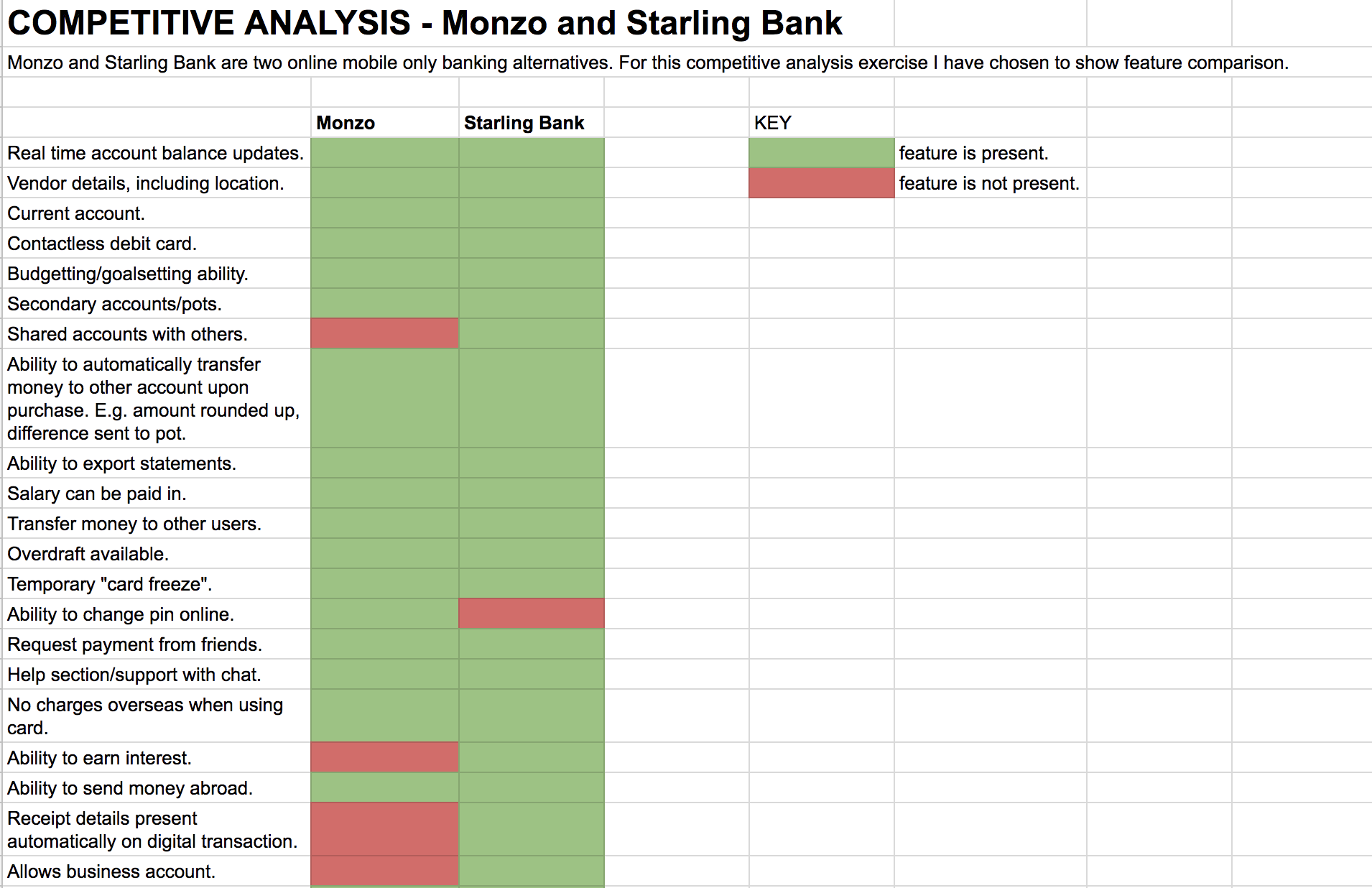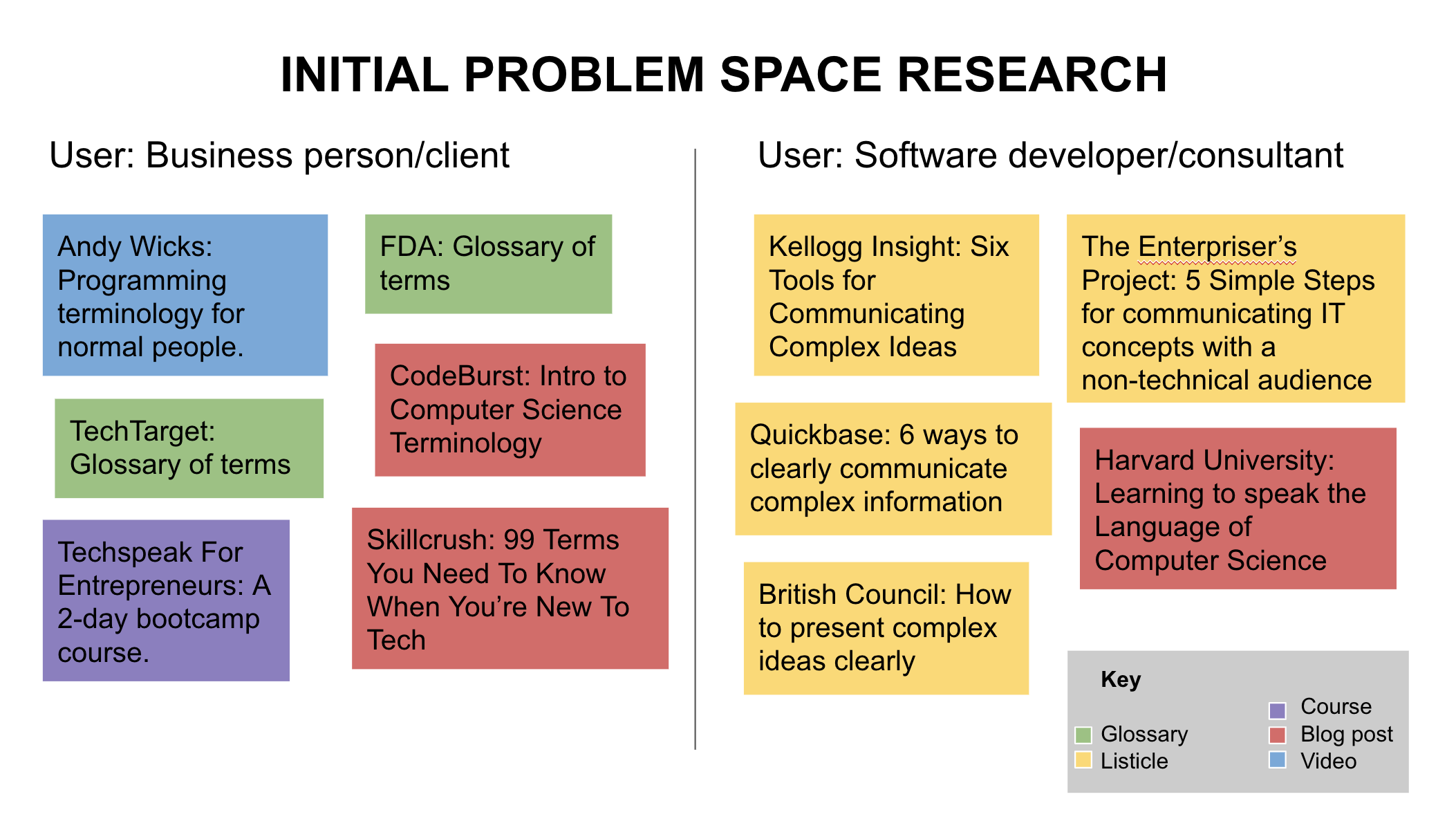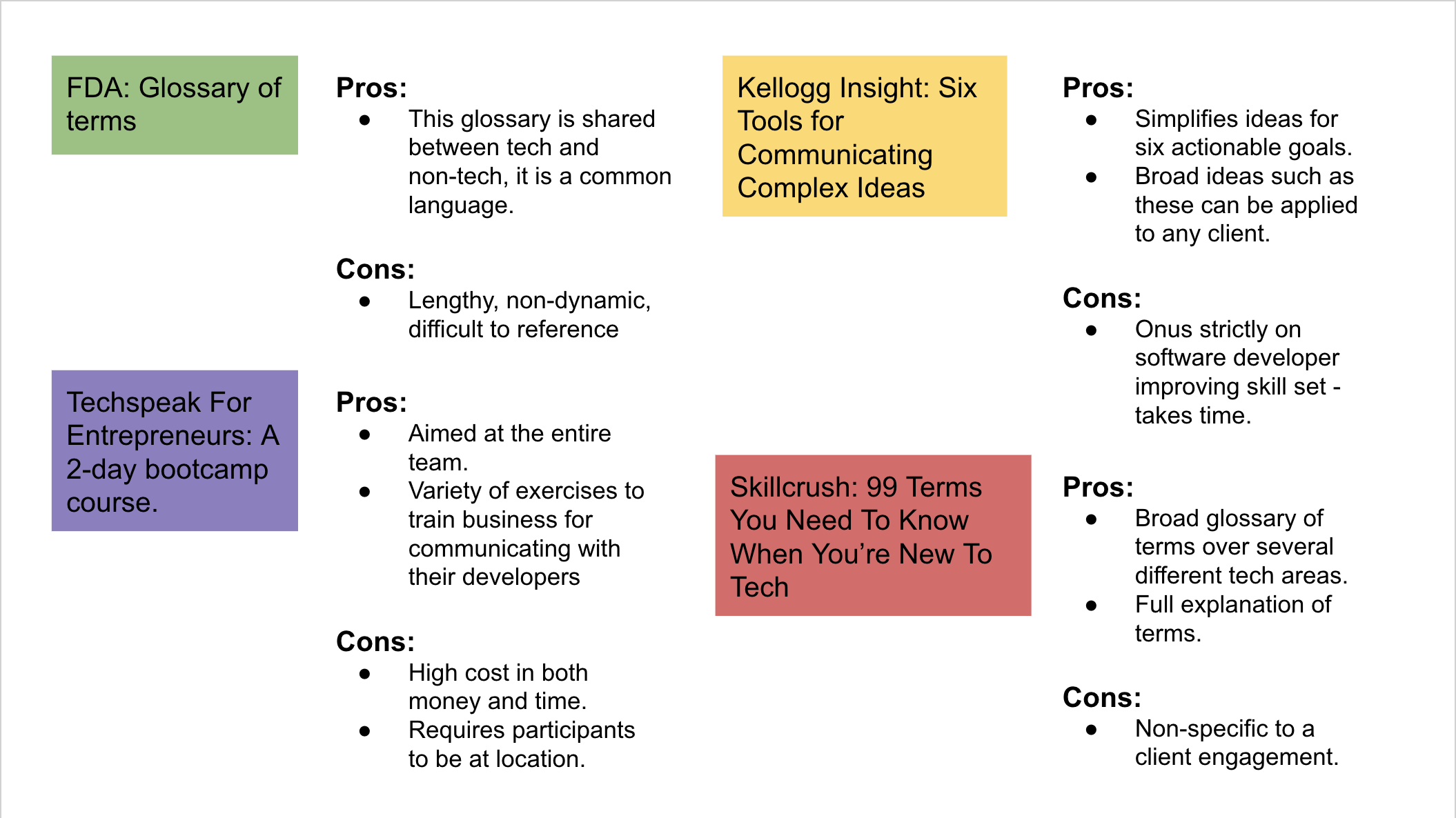How to Conduct Competitive Analysis
Competitive analysis is conducted within User Experience research in order to discover whether an identified problem has any competition, and what that competition is like. Ultimately this will tell the business whether their resulting product will be viable financially, as well as useful. Simply put, competitive analysis is the process where research is conducted on potential competing solutions to your problem. So how should one go about conducting this research? I will share how I conducted mine and my thoughts on the process.
Discover your problem space
The first task is to discover your problem space through research. I began by searching for my problem online. Literally typing, “Problem with communicating technical topics” and “Product that helps with discussing technical subjects” and “Conquering the issue of technical miscommunication”. This yielded many results that attempt to resolve the problem at hand. Such resources were:
- several general glossaries of terms intended to translate technical jargon to the non-technical person. Some companies, such as the FDA, created their own, company-specific, glossary of terms to be shared around teams as a common terminology.
- educational, although informal, videos about programming terminology.
- blogposts from educational institutions and learning resource companies to inform how best to explain technical subjects to the non-technical.
Google as the user/s
These first resources made me realise that simply discovering the problem space was not enough. What was highlighted was that there were two different users for a product that would solve the “Problem with communicating technical topics”. There was the technical-speaking user and the user that they would be communicating with, the non-technical user of the product. With that in mind I began to google the problem as though I was one of those users. What would I be looking for?
If I were the technical, jargon-familiar user I might search for ways to demystify specific subjects, or for courses that I would like to take in communication. This delivered results such as:
- various “listicles” of how to communicate complex ideas.
- technical and business communication courses.
These listicles made suggestions on how to communicate clearly such as:
- being concise.
- conducting improvisation/practise situations.
- using metaphors in several ways, developing storytelling skills and using visual metaphors.
- making eye contact.
- determining level of expertise beforehand.
- breaking the subject into manageable parts for newbies.
- channelling steve jobs (lol).
- avoiding jargon and acryonyms.
- whiteboarding - showing diagrams.
- using data.
- using logic.
- using equations.
- using imagery.
- encouraging audience participation.
While these listicles made excellent suggestions I thought there was a lot of onus on the technical user to learn and develop such skills, something that would take a considerable amount of time and effort. A solution to this would be taking one of the communication courses that I came across, however all of the courses that I researched came with a hefty price tag. In all of the competitive analysis that I conducted, such courses were the only competing “products” that I saw.
Looking at the potential problem from the perspective of the non-technical user, I searched for products that might help one to learn technical jargon, as well as for specific questions such as, “What is an API” for example. This lead me to:
- educational blogging websites such as Skillcrush.
- online tech courses such as Codecademy, although these were too specific and low-level for such a user.
- Educational videos explaining various technical concepts created by companies that specialise in such areas.
I found that again there was a heavy onus on the user to learn and develop skills, and this is made more difficult if the user does not know where to focus their attention. After all, the goal is not to educate the non-technical user to the point where they could do the technical person’s job. It is to provide a bridge of understanding between the two users. Again there were not any specific competing products apart from pricey and committed communication courses.
Collate and analyse
The goal of competitive analysis is to discover if your proposed problem is valid and if there are viable competitors. The wealth of resources that I found on the subject of technical communication confirmed that it is a problem experienced by many people. However I found very few products that attempt to solve the problem. Such solutions were time-consuming and expensive courses that required a lot of work and commitment from users. I found this encouraging, albeit surprising.
Research the competition
Once competitors have been established it is important to conduct more research on their product. If their product is one that you yourself are able to use, then do. In my case I was not able to take competitor courses due to price and geographic location. However, if your competitor’s product is an application, consider downloading and using it. This will help you to understand the goals of your competitor and their users. It will also help you to see what the competitor has done well and where they have fallen short.
Show your findings
A UX designer must share their analysis with their client in a way that is quick to grasp. A great way to do this is to use visual grids to compare competitors. Such grids must be clear and uncluttered. An example might be a feature analysis between your established competitors. Using a spreadsheet to show your grid may not be fancy, but is clear and often sufficient:

Another effective way to encapsulate your research is to provide pros and cons for each of your competitors. As such a grid is intended to summarise, try to keep it visually simple, while showing the most important information:

Here I have used slides to show my analysis, but this could also be presented to clients just as effectively on a whiteboard during a discovery session, or using pen and paper.

Using colour to differentiate competitors and keys to provide more clarity is helpful to the client in this case. Above I have attempted to convey the concerns of two different users in relation to the initial problem space, then selecting a range of competitors from different areas to summarise what they do well and not so well.